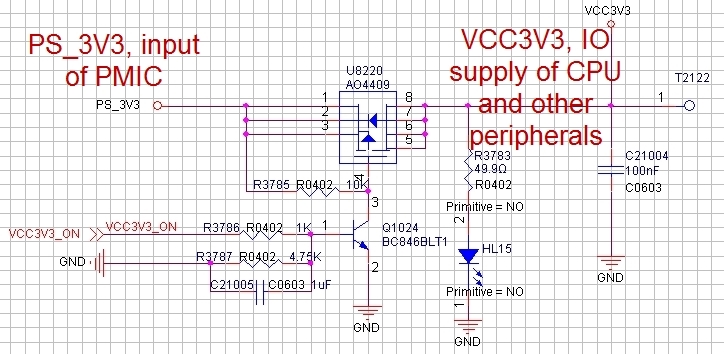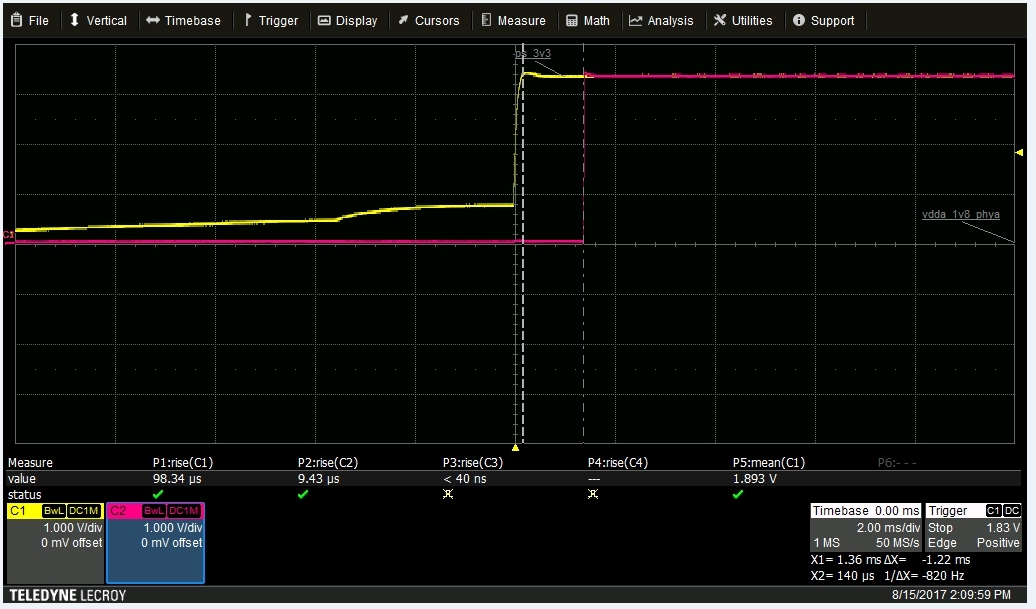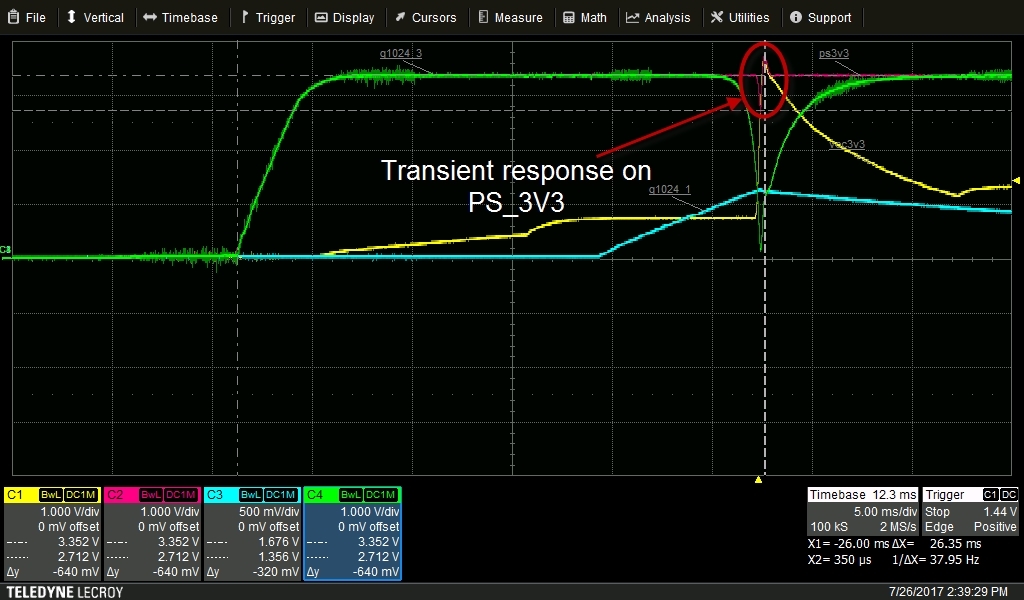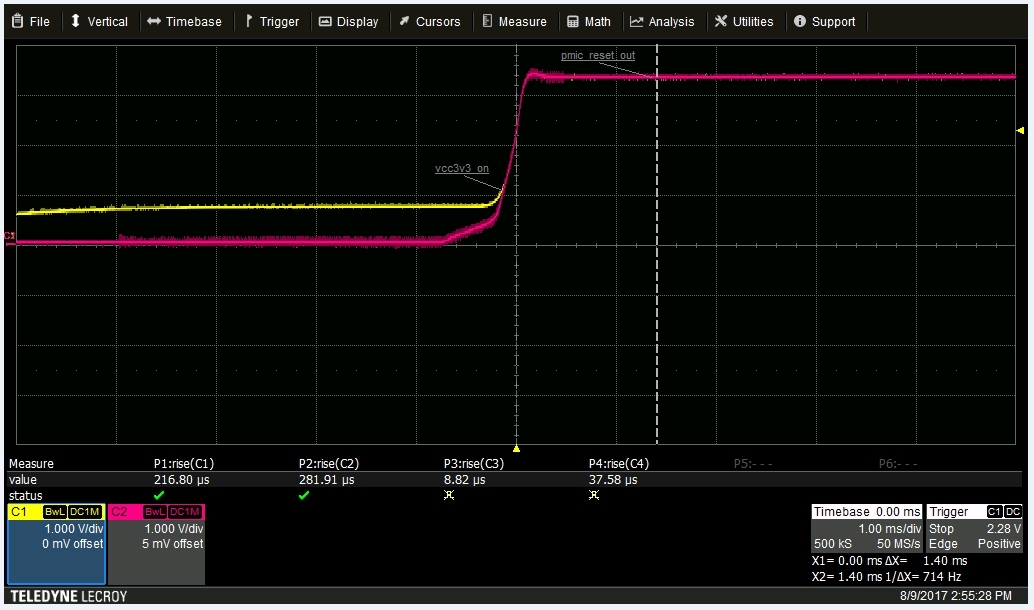From field:
Customer recently found AM5728 is overheating when the power sequence violation. Figure 1 is the diagram of power supply. In order to fix overshoot issue, they slow the switch time of mosfet, which makes the arrival time of ps3v3 and reset voltage is similar. Please refer to ‘ps3v3-vsdmmc-pmic_rst_out_vcc_3v3-02 (2)’. Than they observed the overheat of AM5728, about 100 degree Celsius, and normal tem is 60-70 degree Celsius.
They doubted that the violation of power sequence results in latch up of AM5728, which leads to high currents and device damage. And they hope they can get an official confirm of their doubt. Thank you.






